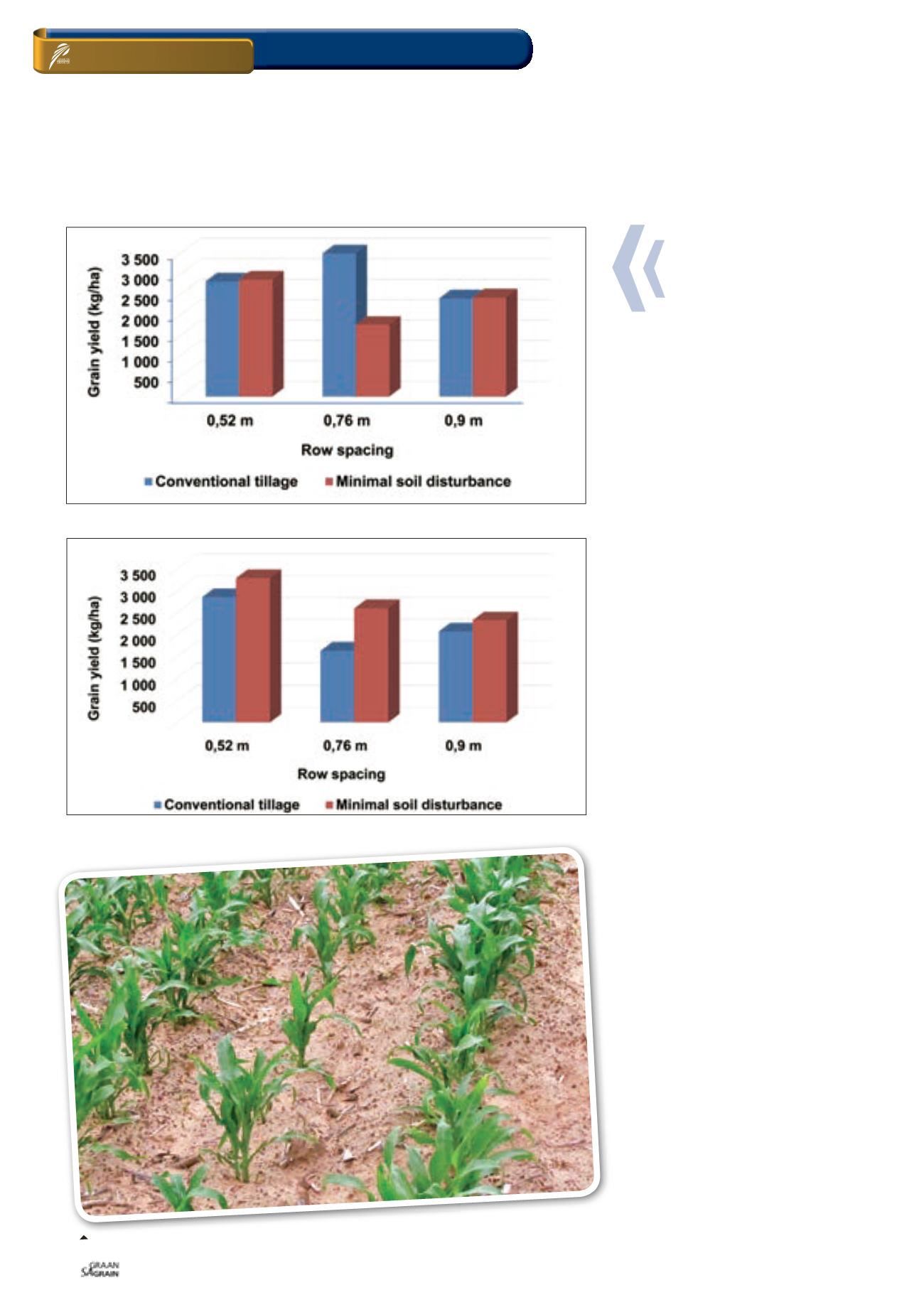
September 2014
114
ON FARM LEVEL
Management practices
Three maize plant densities (20 000 plants/
ha, 40 000 plants/ha and 60 000 plants/ha)
and three row spacings (0,52m, 0,76m and
0,90 m) were evaluated under two tillage
practices (conventional tillage [
Photo1
] and
minimum soil disturbance [
Photo 2
]).
The same maize hybrids (PAN 6Q-445B
at Buffelsvallei and DKC 78-35R at Vil-
joenskroon) that are used by producers at
the respective sites, were chosen in order
tomake comparisons. If the results indicate
better performance, producers might be
convinced to adapt the new technology.
Trials were planted by hand using jabbed
planters.
The row spacing of 0,9 m was used as
the control check since it represents the
standard row spacing most commercial
producers practice in South Africa. CAwas
practiced for approximately seven years at
the Viljoenskroon field trial site, while no
CA was previously done at the Buffelsval-
lei site. Each plot comprised of four rows,
each 10 m long. The sites had a fairly
reasonable content of NPK compared to
average sandy loam soils in the maize
production triangle, attributable toprevious
better fieldmanagement.
The topsoil (0 cm - 20 cm) NPK valueswere
5,2 mg/kg, 28 mg/kg and 100 mg/kg for
Buffelsvallei, while it was 6,33 mg/kg and
200 mg/kg at Viljoenskroon. Soil pH (H
2
O)
was within the norm for maize production
at both sites. All plots received the same
amount of fertiliser in the formof NPK.
All the other agronomic practices, such
as crop management, were kept uniform
during the cropping season. Rainfall
during the planting season was 400 mm at
Buffelsvallei and 270 mm at Viljoenskroon.
Grain yield was measured at physiological
maturity in the twomiddle rows at a length
of 7m each.
Results
Plant density
At Buffelsvallei, the one year data showed
that planting maize at the lowest density
of 20 000 and the highest of 60 000 plants/
ha under deep ploughing (conventional
tillage), resulted in a higher grain yield
(approximately 30%) than with reduced
tillage (
Graph 1a
). Comparable yields can
however be obtained between the two
tillage practices when maize is planted at
40 000plants/ha.
Incontrast,at theViljoenskroonsite,allplant
densities under minimal soil disturbance
resulted in higher yields compared to the
Graph 2a: Effect of row spacingongrain yieldunder two tillagepractices at Buffelsvallei.
Graph 2b: Effect of row spacingongrain yieldunder two tillagepractices at Viljoenskroon.
1: A conventionally tilledplot.
Do row spacing and plant density
influencemaizeproductivity under reduced tillage?


